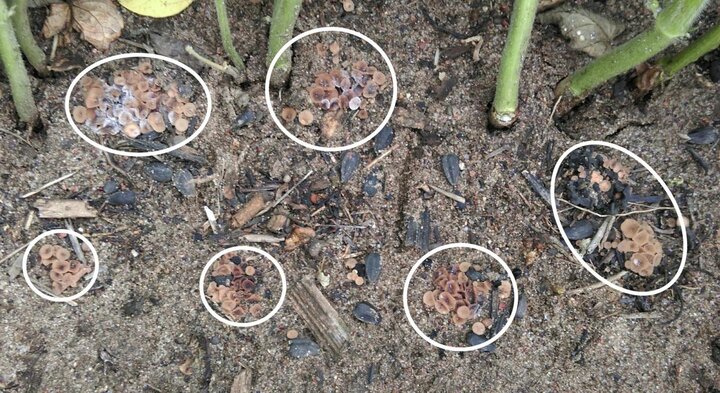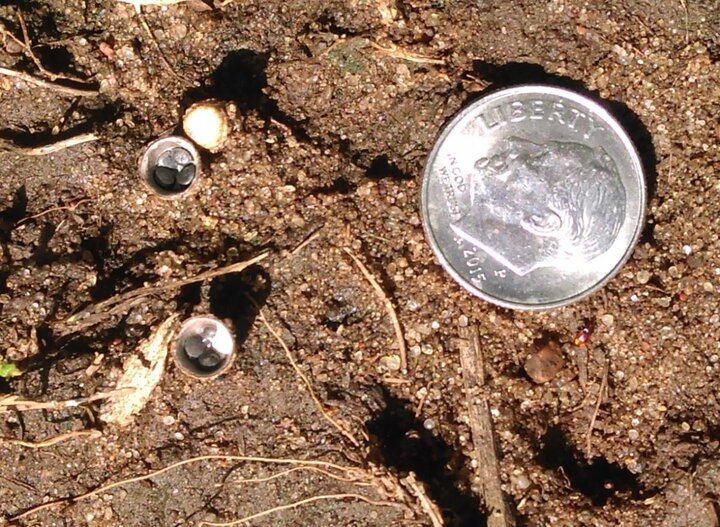

Over the past couple weeks there have been questions on what to look for when scouting for signs of white mold in soybean. This article is intended to show the differences in the apothecia and other common fungi observed in soybean fields. Apothecia (Figure 1) are the mushroom like fruiting structures formed by Sclerotinia sclerotiorum, the causal agent of white mold. These structures release the spores that start the disease cycle.
White mold or Sclerotinia stem rot is a disease that starts earlier in the season during flowering. The actual infection occurs on the senescing flower which is used by the fungus as a food source. Infections in soybean typically start at a node. You can tell when the infection occurred based on how high up the plant the stem lesions and fungal growth are. The much warmer temperatures during flowering this year should result in much lower or no disease development in many portions of the state where there was significant disease the past three years. When temperatures are over 85°F during flowering, there is a much lower risk of development.
Typically, plant symptoms will not appear until the fungus has progressed to the point that plants are dying. In the field you will notice individual or small pockets of dead or dying plants. Upon close inspection you will see a white cottony fungal growth on the stems (Figure 2). You may also see dark black bodies (sclerotia) of the fungus on the stems. If it is drier and plants are dead, the stems will be very light (bleached) in color. When dead stems are split, often you will see the sclerotia inside. Keep in mind that the disease will not spread much if temperatures are in the 90s. The optimum temperature for growth of this fungus is 75°F.


Similar Looking Fungi Not Associated with Soybean Diseases
Several common fungi produce growth and fruiting structures in fields as a result of natural decomposition of crop residue. This is especially true in fields with higher yields and larger amounts of residue. The bird’s nest fungus (Figure 3) and other small fungal fruiting structures are often mistaken for the apothecia of Sclerotinia. In addition, this time of year you can see white mycelial growth on soil (Figure 4), a natural decomposing fungi that may be thought of as “white mold.” Neither of these fungi are associated with disease. At times the white mycelium can grow onto the base of the soybean plant, but the plants will be healthy with no adverse effects.
Diagnosis
If you are uncertain of what’s causing damage in your field, I encourage you to have a suspect sample identified by UNL’s Plant & Pest Diagnostic Clinic. (See PPDC site for information on submitting samples.)
More information on these and other soybean diseases can be found in the Plant Disease section of CropWatch.unl.edu.
